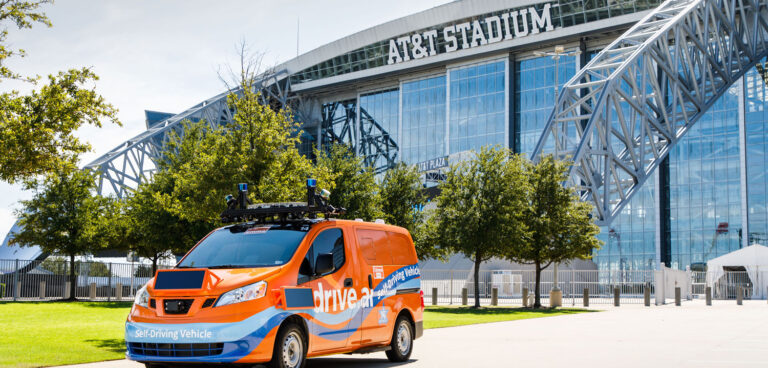Drive.ai has rolled out its autonomous shuttle to the streets of Arlington, Texas, for members of the public to ride its on-demand transportation service.
The Californian company, which offers self-driving technology using artificial intelligence, has previously introduced its autonomous vehicle in Frisco, Texas, but now the mobility service will operate on designated routes around the city of Arlington.
The plan has been a year in the making and is now a reality, which will see a fleet of three self-driving passenger vans run a year-long trial.
“As one of the nation’s first self-driving, ridehailing programs available for use by the general public, this type of dynamic, on-demand service is a major step forward for the self-driving industry,” said Bijit Halder, CEO, Drive.ai.
Where the vehicles operate
Drive.ai will run shuttles on a route beginning and ending at the Arlington Convention Center and will pass places such as the Dallas Cowboys AT&T Stadium, the Texas Rangers’ Globe Life Park, Sheraton hotel, CenterPoint office complex and surrounding areas of the city.
When will they start
The vehicles will start the first round of rides on October 19 through to October 20 starting at 11am and finishing at 2pm local time. Following this they will run between 11am and 6pm from Thursday to Sunday. However, during Dallas Cowboys home games the shuttles will run only between AT&T Stadium and the CenterPoint Office Complex at Randol Mill Road and Six Flags Drive.
Who can use it, how much does it cost and how to sign up a ride
The Drive.ai vans are open for anyone to hail and do not cost anything. Users will either have to visit a kiosk at the Live Arena at Texas Live or at the Arlington Convention Center.
They can also download the Drive.ai mobile app from October 24 and select where they would like to be picked up and dropped off. For the first round of rides those wanting to catch a ride will have to register for their 15-minute time slot using the Drive.ai website.
What else to know
The vehicles travel at 35mph and while the autonomous shuttles do not operate using a human driver, there will be two operators in the vehicle during service, with one sat in the driver’s seat ready to take control in emergencies.
Informational signage will be placed throughout the route, the vehicles will be painted a highly visible orange and they will feature four external screens that communicate the vehicles’ intended actions to pedestrians and other road users.


